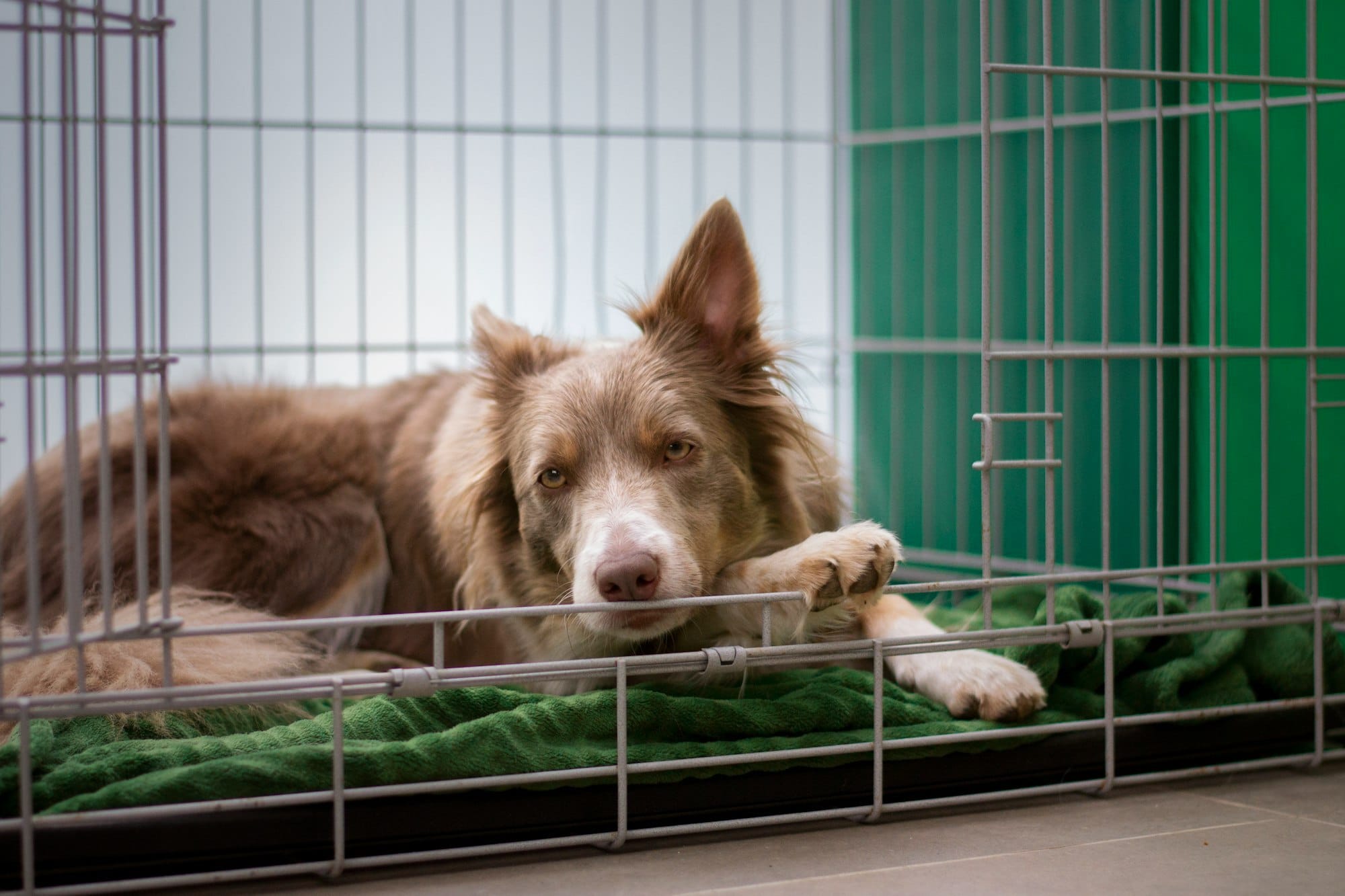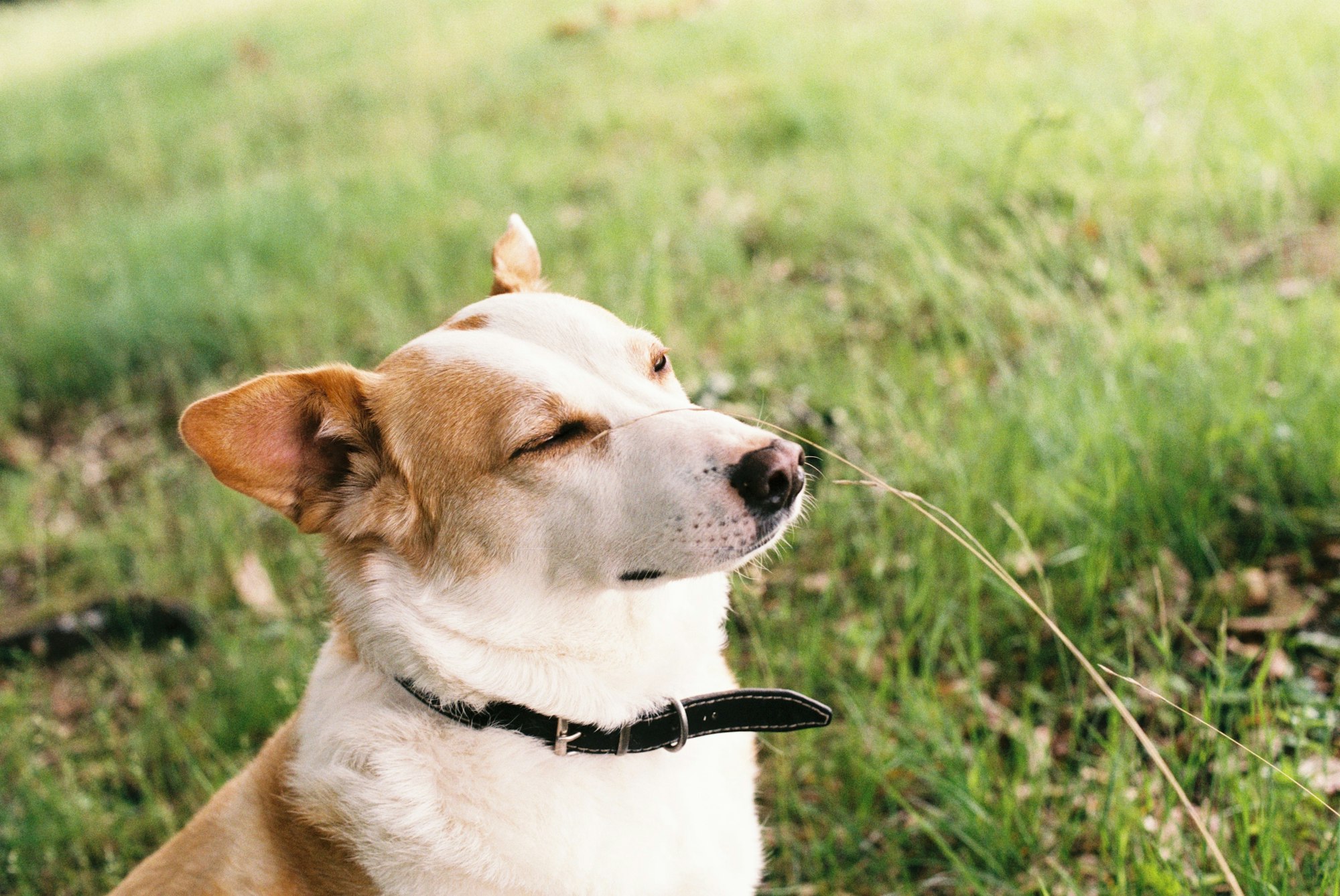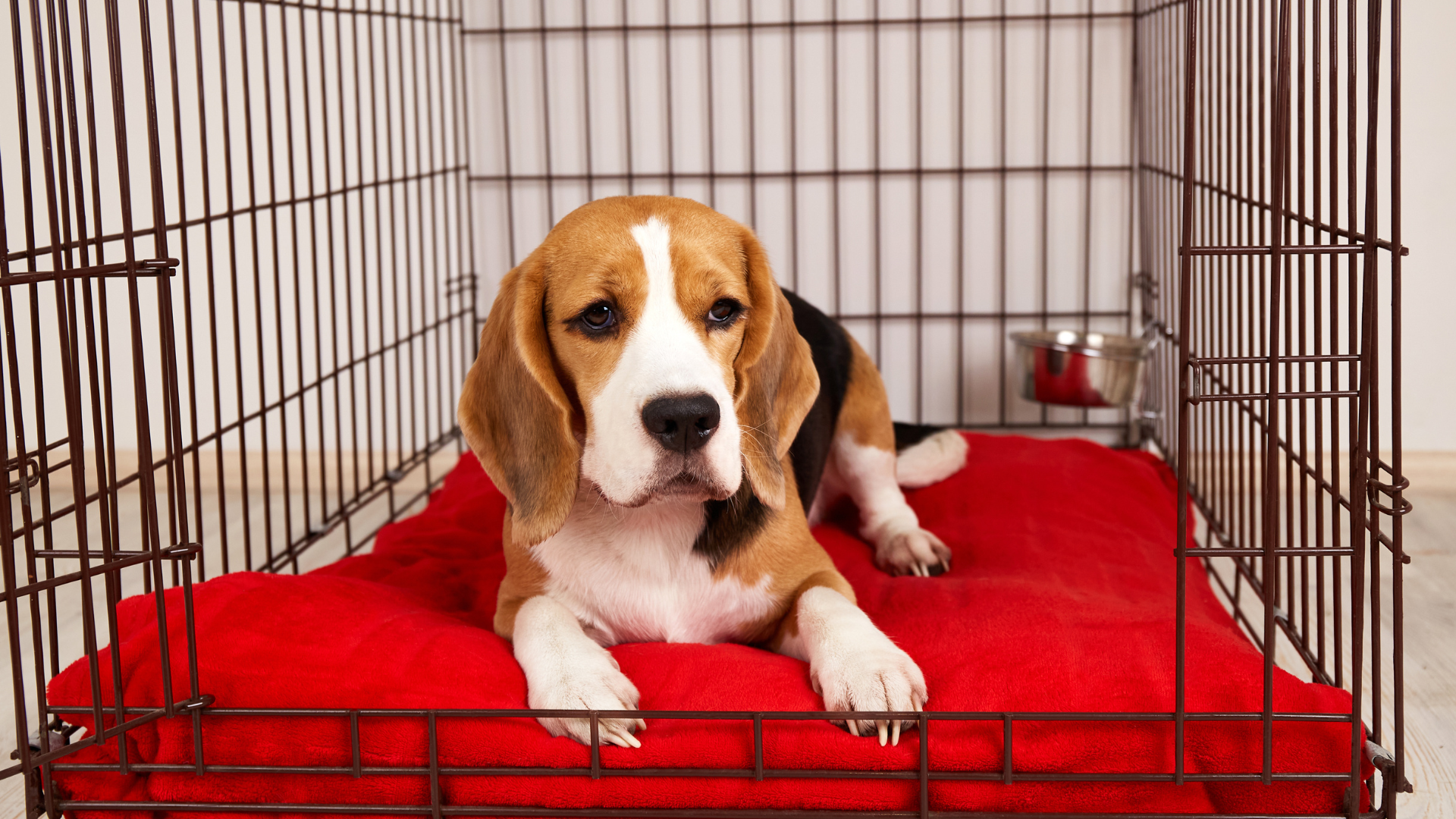Crate training an older dog can seem challenging, but with the right approach, it is entirely achievable. Providing a safe, comfortable space for an older dog encourages them to see the crate as a positive environment rather than a place of confinement. Understanding their needs and adjusting the training methods accordingly can make all the difference.

Many older dogs already have established habits, and it's essential to approach crate training with patience and consistency. Each dog has its own personality and preferences, so tailoring the training process to suit the individual dog is crucial. Regularly rewarding them for positive behavior in the crate can help reinforce this new routine.
Ultimately, crate training not only helps with managing an older dog's behavior but also supports their wellbeing as they develop new routines. Following a structured plan ensures that they learn to embrace their crate as a safe haven, giving both the dog and owner peace of mind.
Understanding the Basics of Crate Training

Crate training is a valuable process for older dogs, serving as a means to create a safe space for rest and relaxation. It utilizes positive reinforcement to help the dog adapt and feel secure in its crate, minimizing stress during the transition.
What Is Crate Training?
Crate training involves teaching a dog to view its crate as a safe and comfortable environment. The crate acts as a den-like space where dogs can retreat to rest and relax. For older dogs, this process should be gradual, allowing them to explore the crate at their own pace.
It's important to choose a crate that provides enough room for the dog to stand up, turn around, and lie down comfortably. Introducing the crate with familiar items, such as toys or blankets, can make it more inviting. Positive reinforcement techniques, such as treats and praise, encourage the dog to enter willingly.
Benefits of Crate Training an Older Dog
Crate training offers numerous benefits for older dogs. First, it provides a secure space that can reduce anxiety during stressful scenarios, such as loud noises or visitors. This sense of a safe haven is essential for anxiety-prone dogs.
Additionally, a crate can assist in house training by establishing a routine. Since dogs instinctively avoid soiling their sleeping area, confining them to a crate encourages them to hold their bladder until they are let outside.
Furthermore, a crate can prevent destructive behaviors by limiting access to certain areas of the home when the owner is absent. In this way, crate training enhances safety for both the dog and the belongings in the home.
Selecting the Right Crate

Choosing the appropriate crate is essential for successful crate training, especially with an older dog. The right crate should ensure comfort, security, and safety for the pet, accommodating their needs.
Types of Crates
Different types of crates suit various preferences and needs. The most common include:
- Wire Crates: These provide ventilation and visibility. They are often foldable for easy storage and can be customized with dividers for growing dogs.
- Plastic Crates: These offer a more enclosed environment. They can serve as a safe place for dogs who prefer a den-like space and are also great for travel.
- Soft-Sided Crates: Lightweight and portable, they usually have a breathable fabric. They're ideal for calm dogs but may not be suitable for chewers or highly active dogs.
Choosing the right type depends on the dog's temperament and the intended use of the crate.
Size and Comfort Considerations
The size of the crate plays a crucial role in training. It should be large enough for the dog to stand, turn around, and lie down comfortably.
A commonly used guideline is to measure the dog's height and length.
- Small Breeds: 24-30 inches long crate.
- Medium Breeds: 30-36 inches long crate.
- Large Breeds: 36 inches or longer.
Adding a soft blanket can enhance comfort, making the crate an inviting space. The crate should become a safe place where they can relax, reducing stress and anxiety. Ensuring both size and comfort will make crate training more effective.
Preparing the Crate for Training

Setting up the crate properly is essential for effective training. The location and environment can significantly impact the dog's comfort and willingness to use the crate.
Location and Setup
Choose a quiet location for the crate, away from distractions and high traffic areas. An ideal spot may be in the living room or a corner of the house where the dog feels safe.
Ensure the crate is sturdy and large enough for the dog to stand up, turn around, and lie down comfortably. This can prevent feelings of confinement.
You can place a comfortable dog bed inside to create a resting place. Adding a toy can also make the crate more inviting and encourage exploration.
Creating a Welcoming Environment
To foster a positive experience, line the crate with soft bedding or blankets. This ensures that the dog has a comfortable resting place.
Include a water bowl if the dog will be in the crate for an extended period. This allows the dog to hydrate without needing constant supervision.
Encourage the dog to enter the crate voluntarily by using treats or favorite toys. Gradually introduce them to the crate so that it feels secure and inviting rather than a place of isolation.
Training Your Dog to Use the Crate
Crate training an older dog requires patience and a clear strategy. Establishing trust and positive associations with the crate is crucial for success.
Introducing Your Dog to the Crate
Begin by placing the crate in a calm area of the home. Open the door and allow the dog to explore at their own pace. Use treats to encourage interest, tossing them inside to create a positive association.
When the dog enters the crate, offer verbal praise and gentle petting. It is essential to keep the door open initially, allowing the dog to come and go freely. If the dog appears hesitant, do not force them inside. Instead, give it time, reinforcing positive behaviors with rewards. Building this trust will make subsequent steps easier.
Feeding Meals Inside the Crate
Once the dog is comfortable entering the crate, start feeding meals inside it. Place the dog's food bowl near the entrance at first, gradually moving it further back as they become more accustomed. This helps them associate the crate with positive experiences.
Ensure the environment remains calm during mealtimes. Avoid distractions that may cause stress. If the dog shows reluctance, make adjustments—such as using enticing food or treats—to encourage them. Always offer praise after they eat, reinforcing the crate as a safe space and a place for rewards.
Increasing Time Spent in the Crate
Begin leaving the dog in the crate for short periods while closing the door. Start with just a few minutes, gradually increasing the duration as the dog becomes more relaxed.
Practice this while remaining nearby, allowing them to hear your presence. If the dog becomes anxious, ease back to shorter periods. Utilize treats when closing the door and praise them whenever they remain calm. Over time, this will help establish a positive behavior pattern.
Maintain calmness throughout the process and always be patient. Thorough training sessions contribute to a well-adjusted pet.
Addressing Potential Issues
Implementing crate training for an older dog can introduce various challenges. Identifying signs of anxiety or stress, as well as managing unwanted behaviors, is crucial for success.
Dealing with Anxiety and Stress
Older dogs may experience anxiety related to crate training, especially if they have not been crate trained before. Separation anxiety can manifest as whining or barking when left alone. To ease these feelings, it's important to create a calm environment around the crate.
Strategies to reduce anxiety include:
- Gradual introduction: Allow the dog to explore the crate without closing the door initially.
- Comfort items: Place familiar blankets or toys inside the crate to help them feel secure.
- Positive reinforcement: Reward her for entering the crate willingly with treats or praise.
Patience is key. It may take time for an older dog to associate the crate with relaxation rather than confinement.
Discouraging Unwanted Behaviors
Unwanted behaviors can arise during crate training, such as excessive barking or trying to escape. Addressing these habits early on is vital to prevent them from becoming ingrained.
Effective approaches include:
- Consistency: Maintain a regular schedule for crating, feeding, and bathroom breaks to establish a routine.
- Avoiding punishment: Instead of reprimanding, redirect the dog's attention when she starts barking excessively.
- Training sessions: Incorporate short, positive sessions aimed at reinforcing desirable behaviors.
By encouraging calmness and rewarding good behavior, it becomes easier for the dog to unlearn less desirable habits and embrace the crate as a positive space.
Ensuring Safety and Comfort
Creating a secure and pleasant environment for an older dog during crate training is essential. Proper bedding and toys can make a significant difference in how they adjust to their new space. Additionally, monitoring the duration and frequency of crate time ensures their wellbeing.
Appropriate Bedding and Toys
Choosing the right bedding is crucial for an older dog's comfort. Soft, supportive materials such as orthopedic dog beds can alleviate pressure on joints, providing comfort to aging pets. It's essential to select bedding that is washable to maintain hygiene.
When it comes to toys, durable options designed for strong chewers are ideal. Incorporating favorite toys can help the dog feel more at ease in the crate. Puzzle toys offer mental stimulation, making crate time enjoyable rather than stressful. Avoid toys with small parts that could pose a choking hazard.
Monitoring Duration and Frequency
It's vital to monitor the length of time an older dog spends in the crate. Gradually increasing the duration helps prevent anxiety. Start with short periods and assess how the dog reacts.
The frequency of crate time should also be closely observed. Older dogs require regular exercise and bathroom breaks. Therefore, it's beneficial to let them out frequently to prevent discomfort. Incorporating short crate games can make the experience positive. This approach reinforces crate training and allows the dog to associate their crate with safety and fun.
Advanced Crate Training Techniques
Training an older dog to use a crate involves implementing specialized techniques suited for various situations. These strategies ensure the dog becomes comfortable during extended periods and in cases of travel or emergencies.
Training for Longer Periods and Different Circumstances
To train an older dog to stay in a crate for longer durations, gradually increase the time spent inside. Start with short intervals, allowing the dog to adjust before lengthening the sessions.
Key Steps:
- Use a Cue: Introduce a specific command like "crate" to signal when it's time to enter.
- Positive Reinforcement: Reward with treats or praise when the dog enters willingly.
- Comfort Items: Place familiar toys or blankets inside to create a cozy atmosphere.
Patience is crucial. Each dog responds differently, so monitor their comfort level and avoid pushing boundaries too quickly. If a dog shows signs of stress, it may need more time to adapt.
Crate Training for Travel and Emergencies

Preparing an older dog for travel or emergencies requires familiarizing them with the crate in various scenarios. Start by practicing in a stationary vehicle with the crate secured.
Essential Tips:
- Door Open: Begin with the crate door open, allowing the dog to explore without pressure.
- Short Trips: Take them on brief car rides, gradually increasing the duration.
- Emergency Protocol: Have a plan for natural disasters or other emergencies.
Teach the dog to enter the crate on command, making it part of their routine. Consistent practice ensures they feel secure and knows where to go when unexpected events arise.
Maintaining Crate Training Progress
Consistency and engagement are crucial for maintaining crate training success. Regular practice and a focus on positive reinforcement can help an older dog continue to thrive in their crate. In some cases, seeking professional guidance may also enhance the training experience.
Regular Practice and Positive Reinforcement
Regular practice is essential for reinforcing crate training. Setting specific times for crate training helps establish a routine. This structure supports the dog's comfort with their crate, reducing anxiety.
Incorporating positive reinforcement is vital. When the dog enters the crate willingly or remains calm, offer treats or praise. This approach creates a positive association with the crate. Consistency in rewards ensures the dog remains interested in using the crate.
Including brief training sessions throughout the day keeps the experience engaging. Short but frequent practice can help maintain interest and reinforce good behavior. Ensure the dog receives sufficient exercise outside of crate time. Physical activity reduces pent-up energy, making the dog more likely to relax in the crate.
Seeking Professional Guidance if Needed
If challenges arise during crate training, seeking professional guidance can be beneficial. A veterinarian or a veterinary behaviorist can provide insights tailored to the dog's specific needs. They may recommend specialized training techniques to address behavioral issues more effectively.
Professional trainers can assess the situation and suggest appropriate training strategies. These may include modification techniques focused on anxiety reduction or confidence-building exercises. Engaging with a professional can also enhance the owner's understanding of the dog's behavior.
Incorporating expert advice allows for adjustments in the training plan. This can lead to more effective results and a stronger bond between the owner and dog. Maintaining open communication with professionals ensures ongoing support and progress in crate training.
Frequently Asked Questions

Crate training an older dog involves various techniques and considerations. Addressing common concerns can help owners implement a successful training process tailored to their dog's needs.
What are effective methods for crate training an older dog during nighttime?
To crate train an older dog at night, establish a bedtime routine that encourages relaxation. Gradually introduce the crate by placing it in a quiet area and using comfortable bedding. Encourage the dog to enter the crate with treats and praise, gradually increasing the duration spent inside.
Can you crate train an older dog that already has separation anxiety?
Crate training a dog with separation anxiety requires a gentle approach. Gradually acclimate the dog to the crate by allowing short, positive experiences inside. Use comforting items, like a favorite blanket, and consider short departures to help ease anxiety before longer periods of crate time.
Is there a different approach for crate training dogs that are over one year old?
For dogs over one year old, it's important to incorporate their past experiences into the training process. Begin with positive associations using treats and praise. Take into account any behavioral issues or learned experiences that might affect their willingness to enter the crate.
What schedule should be followed when crate training an adult dog?
A consistent schedule is crucial for crate training an adult dog. Introduce the crate during specific times for feeding, resting, and play. Start with short intervals, gradually increasing them as the dog becomes more comfortable with the crate.
Are there specific strategies for crate training a dog that is resistant to entering a crate?
To encourage a resistant dog to enter the crate, create a positive environment. Use enticing treats, toys, and verbal encouragement to entice the dog inside. It's important to avoid forcing the dog and instead let them explore the crate at their own pace.
Is there an age limit after which crate training might not be successful?
While age can influence crate training success, there is no strict limit. Older dogs can learn new behaviors, but their previous experiences may affect progress. A patient, tailored approach can help overcome any challenges faced with older dogs during crate training.

